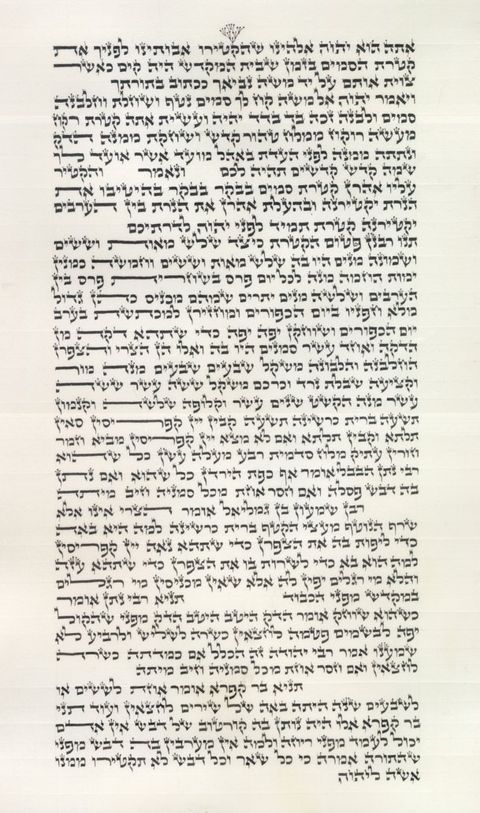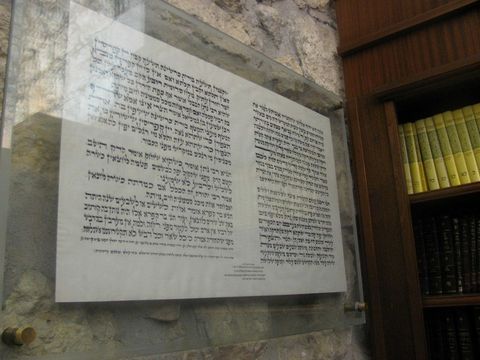- Home
- Activities
- Letters
- Diary
- Tools
- Books
- Education
- Sources
- Oddities
-
MORE
- About me
- Sefer Torah
- Tefillin
- Pittum HaKtoret
- Ketubah
- Alefbet
- Diary 1
- Diary 2
- Diary 3
- Diary 3a
- Diary 4
- Diary 5
- Diary 6
- Diary 7
- Diary 8
- Repairs
- More Repairs
- Yet More Repairs
- Diary 45
- Diary 39
- Broken Vav
- Joined Kuf
- Diary 11
- Diary 46
- Diary 47
- Siyyum
- Some siyyumim
- Diary 26
- Diary 27
- Raised vav
- Kulmus
- Giddin
- Purim shpiels
- Diary 40
- Diary 42
- Kulmus Books
- Mezuzah
- Large letters
- Diary 48
- Diary 49
- Diary 18
- Sefer Binsoa
- Dyo
- Klaf
- In the End
- Adventures in Practical Halachah
- Sefer Tagin Fragments from the Cairo Genizah
- Diary 50
- Megillat Esther
- My first megillah
- 2018 Megillah
- The E-Fuzzy
- Ketubah 2 Avielah's Gallery
- Publications and audio visual
- Old Harrys Ketubah
- Commemorative illuminations
- Diary 51
- Diary 52
Pittum HaKtoret

Incense blended to a special formula was burned in the Temple on the Golden Altar morning and evening. This is outlined in Sh'mot
30:34-36 and 7-8 and the sections from the Talmud
(Bavli
and Yerushalmi) are recited add additional information and indeed ingredients. There are 4 enumerated in the Torah
(stacte, onycha, galbunum and frankincense) but the rabbis make them up to eleven (yes - they go up to ELEVEN!) and then add some other non-core ingredients. You are supposed to count them off on your fingers as you recite them. (counting the on the creases on the back of your fingers - which goes up to 12).
These passages are read as we can’t burn the incense nowadays. The Zohar says that reading it helps remove impurity from the world and the Arizal writes that a careful recitation of these passages helps bring one to repentance because as R. Hirsch says the incense was all about making our actions pleasing to God. Because the ingredients are precise and if there was variation one ‘deserves death’ - one is told to read it from a text (rather then from memory) in case you make a mistake in the reading.
Seder Hayom states that one who fears for himself and for his soul should be put great effort into this matter to write the entire text of the K'toret on kasher k’laf in K'tav Ashurit. And it is said that if you read from a k’laf then it is a segula to merit wealth and do well in business - i.e. to increase your parnassah (income). The Zohar too adds this will bring blessings for livelihood, health and peace as well as atonement. Part of this is derived from the fact that the incense was used to ward off a plague and so is seen as a protective charm of sorts.
These passages are read as we can’t burn the incense nowadays. The Zohar says that reading it helps remove impurity from the world and the Arizal writes that a careful recitation of these passages helps bring one to repentance because as R. Hirsch says the incense was all about making our actions pleasing to God. Because the ingredients are precise and if there was variation one ‘deserves death’ - one is told to read it from a text (rather then from memory) in case you make a mistake in the reading.
Seder Hayom states that one who fears for himself and for his soul should be put great effort into this matter to write the entire text of the K'toret on kasher k’laf in K'tav Ashurit. And it is said that if you read from a k’laf then it is a segula to merit wealth and do well in business - i.e. to increase your parnassah (income). The Zohar too adds this will bring blessings for livelihood, health and peace as well as atonement. Part of this is derived from the fact that the incense was used to ward off a plague and so is seen as a protective charm of sorts.
It is therefore another activity that a scribe will be commissioned to undertake and one that I had wanted to do for ages but never got around to it.
Sometimes they are put into leather holders or onto a single roller like Megillat Esther
or just framed and put on a wall so that people can read the text. There is a very large version in the Kotel
area in the synagogue area in the men’s section on a wall opposite the Psalms scroll (see photo left).
The tikkun
I had from the shop Keset Hasofer
in Mea Shearim
was for a 42 line version and so I decided to produce that as a first go. However I don’t have quite the same wall space as the Kotel
so went for a smaller version - about 3mm letter height.
Above: A
Pittum HaK'toret I wrote that hangs in my dining room. Image © Mordechai Pinchas
Sofer STa"M. Header shows frankincense - Image public domain. Below:
Pittum HaK'toret at the
Kotel.
There is a variance between the Ashkenazi
and Sefardi
text (the one above that I wrote is Ashkenazi Beyt Ari) and generally written either as a 42 line amud
(column) like the Torah
or often as two 21 line amudim
next to each other (also sometimes with psalm 67 in the shape of a Menorah
as a third amud).
Below left to right: Starting the first words from the
tikkun (copyist's guide). Two lines done and eventually the whole column of 42 lines. Right: Framed and ready for hanging.

So if you’d like to increase your parnasah
then you can do that by ordering a Pittum HaK'toret
- and hey that will increase my parnasah
at the same time. Now that’s what I call a ‘win-win’.
Mordechai


